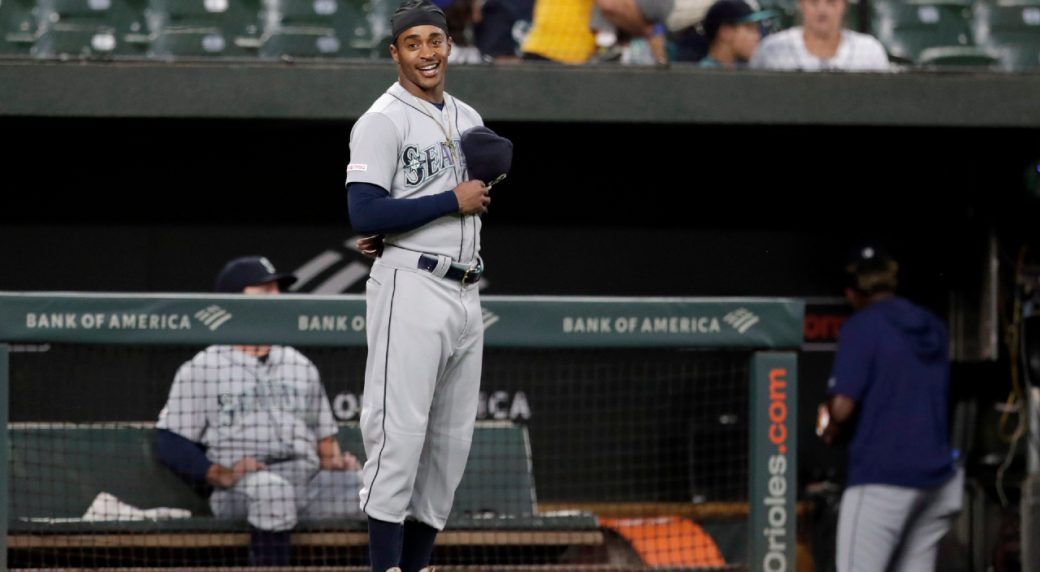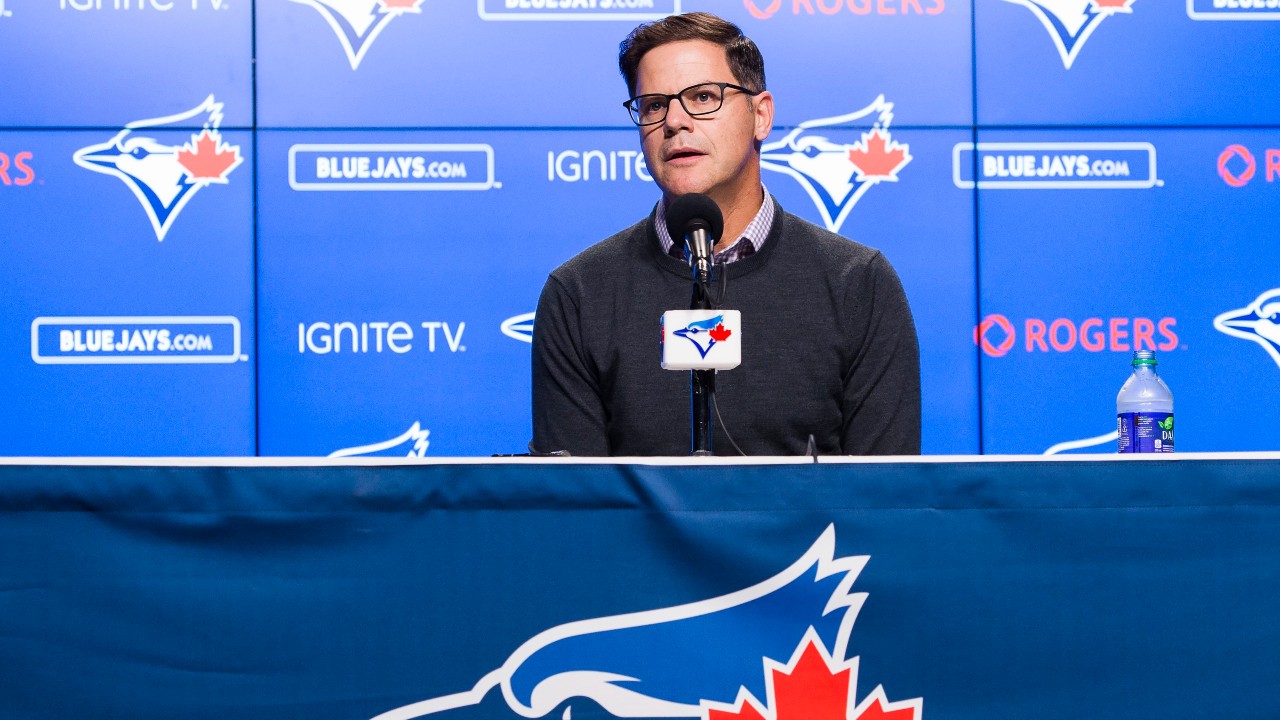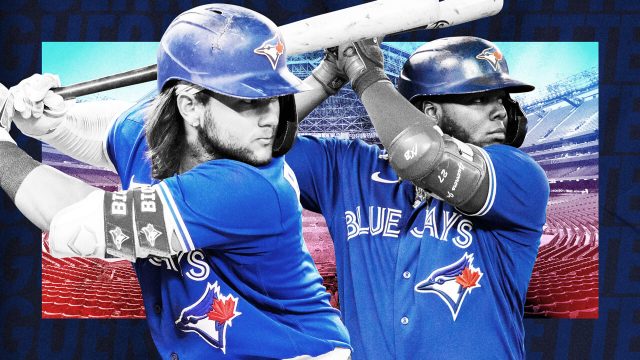Ask a lot of ballplayers to reflect on the season prior, as you do these days at the onset of spring training, and you’ll reliably hear how it was one of learning experiences. How it was about struggle and adversity and challenges, but how that hardship offered opportunities for growth.
And over the years, Mallex Smith would say all that stuff, too. I learned a lot about myself; I made strides; I just want to keep building. But he never really appreciated the meaning behind bromides like those until 2021, an arduous season in what has quickly become a three-year string of them for the 28-year-old outfielder.
Even through the struggles that preceded, Smith never fathomed how precarious an MLB career can be. He never reckoned with the possibility he might not get to do this anymore until he was a free agent without an offer in early June. Until it was right there in front of him.
“I never truly appreciated where I was,” Smith says from Dunedin, Fla., where he’s in camp with the Toronto Blue Jays on a minor-league deal. “Because you want to be somewhere else, right? You want to be further ahead in your career than where you are. But you’re not understanding that you can go backwards — that you could easily not be out there anymore. Nothing’s guaranteed. Nobody owes me this. Baseball isn't mandatory.
“Trust me — I got released. That’ll help it set in real quick. How you could easily be back in the real world, trying to figure out what you're going to do. That’ll give you some perspective, man. That’ll bring about a different appreciation for coming in here every day to go to work.”
OK, that was a little heavy off the top. Let’s take a step back for a minute and consider how we got here. Because it wasn’t so long ago that Smith, a left-handed hitting burner from north Florida, was hitting .296/.367/.406 over a full MLB season, looking like a fixture atop both big-league batting orders and leaderboards for years to come.
It was 2018, a breakout season for the 2012 draftee who went from San Diego to Atlanta to Seattle to Tampa Bay via trades while working his way up the minor-league ladder. Upon finally winning a job on Tampa’s opening day roster out of spring training, and regular playing time following an early-season Kevin Kiermaier injury, Smith went nuts, finishing second among position players on a 90-game winner with 3.5 fWAR and a 118 wRC+. His .367 OBP was ninth among qualified AL hitters. He led the league in triples; finished second in stolen bases. He spent a torrid summer flirting with the batting title.
Excuse the dehumanizing verbiage, but at only 25 and still a year from arbitration eligibility, Smith was a valuable MLB commodity. Which is why the Mariners re-acquired him prior to 2019 — in exchange for a three-player package including Mike Zunino — to be their everyday centre fielder. But a spring training flexor injury foreshadowed a difficult season, as Smith struggled out of the gate, was demoted to triple-A, and finished 2019 with a .227/.300/.335 line over 134 games.
The questionable process behind Smith’s indisputable 2018 results appeared to have caught up with him. An unsustainable .366 BABIP plummeted to .302. An already inflated 19.2 per cent soft contact rate ballooned to 25. He added seven points to his strikeout rate, lost six off his line drive rate, and set a career-high with a 30 per cent fly ball rate — undesirable contact from a player who makes hay with his legs.
Even Smith allows that those final three stats tell much of the story of why he fell off. As hitters across the game progressively prioritized launch angle, elevating batted balls over increasingly common infield shifts towards the outfield, where the extra-base hits that juice a player’s OPS — what gets you paid in the game’s modern era — are had, Smith bought in. He tried to get under pitches more often; he tried hitting for more power. But Smith’s game isn’t predicated on that.
“It's just not a good habit for me. I'm 180 pounds soaking wet,” says Smith, who, despite his struggles, still managed to lead MLB with 46 stolen bases in 2019. “I need to make sure I spray the ball, spread it around, stay in control of my barrel. And if I miss, I miss on the ground.
“The ground ball, the stolen base, all that’s part of my game. It's been diminished a little bit across baseball. Kind of frowned upon and underappreciated. And if you're feeling underappreciated in some areas, you try to go somewhere else to get appreciation. But when I tried to go to power, I lost consistency. And it’s easy to get lost in it. It's easy to get caught up in what everybody else has got going on. Instead of just being who I was and doing what brought me success in the first place.”
So, that was not a fun time for Smith. Nor was the three-week stretch he spent with the Mariners during the 2020 pandemic season, in which he hit .133/.170/.178 over 47 plate appearances before being optioned, outrighted, and quietly granted free agency, less than two years after he was the centrepiece of a trade that got him on MLB Network.
Smith started 2021 on a minor-league deal with the New York Mets and reported to the club’s alternate site, awaiting the beginning of the minor-league schedule so he could start working his way back to the majors. But just days before he was slated to join the triple-A Syracuse Mets in early May, Smith fouled a ball off his right foot during living batting practice, fracturing a bone.
And only days after that, the Mets encountered an astonishing run of outfield injuries — Brandon Nimmo, Albert Almora Jr., Michael Conforto, Kevin Pillar, and Johneshwy Fargas all hit the IL within the span of three weeks — that would have assuredly created a major-league opportunity for Smith had he been healthy.
Then again, who’s really to say? Evidently, the Mets weren’t sold on something, because the day Smith was cleared to return to baseball activity, he picked up his phone and learned he was being released.
“Yeah, wasn’t expecting that,” Smith says. “Didn’t even get back on the field when I was cleared. They just said it was best to part ways. It was tough because I didn’t play much at all in 2020. And didn’t play well when I did. Now it’s 2021, I haven’t done much in two years; I haven’t even had a chance to show that I can be the player I’ve been. And now I don’t even have a job. I was like, ‘Man, as high as it can get in this game, it can get real low, too.’”
Three weeks after his release, a lifeline finally arrived from the Cincinnati Reds, who scooped Smith up on a minor-league deal. But only a month into his time with Cincinnati’s triple-A affiliate in Louisville, Smith tweaked his right oblique and was sidelined again. He tried playing through it, botched a couple too-soon comeback attempts, and ultimately sat out until late August, when the Reds traded him to the Blue Jays. And what happened in his second game with Toronto’s triple-A affiliate, the Buffalo Bisons?
“Bang, blew my hammy,” Smith says. “It was just one thing after another. Injury; released; another injury; got traded. Now I’m on a new team, like, ‘OK, let me just get this bunt down and get on base for these guys, get in position to score a ribbie for my new teammates.’ I drop the bunt, get the hit — but three-quarters down the line I felt my hammy give. And I was like, ‘All right, here we go again.’”
It’s probably not a coincidence that Smith’s foot, oblique, and hamstring injuries all occurred on his right side (“You tell me,” he says). He grew deconditioned while rehabbing the broken foot with New York; tried to play through the oblique when he should’ve let it heal with Cincinnati; and asked his body to withstand too much load when he was trying to salvage something of his season with Toronto. Everything snowballed, producing a discombobulated year of stops and starts at a time Smith wanted — needed — to show the baseball world he could still be the player he once was.
Just about the only positive he can take away from it is that he finished the season healthy and hot, returning to the Bisons in late September to start four games, racking up six hits — including two homers and a triple — and four walks over his final 19 plate appearances. The homers were particularly encouraging because Smith, having abandoned his fruitless pursuit of power, wasn’t trying to hit them. He was trying to re-implement the low launch angle approach that gave him success in 2018. The power just came naturally, the way it should.
“I was like, now that's how you finish off a tough year right there,” he says. “I was just having fun. I can't emphasize that enough. Like, I was just so excited to go to the field. I didn’t care about anything else but playing. For the first time in a long time, everything just felt easy.”
It was part of the reason why Smith was eager to rejoin the Blue Jays when they reached out about a minor-league deal early in the off-season. He learned from the staff he worked with in Buffalo; enjoyed the group of players he shared a clubhouse with; relished playing for Casey Candaele, a player’s manager who expects you to compete hard and be yourself. With his seventh MLB organization, Smith found something that felt promising.
“I can sincerely say the group here is really great to work with. They've been doing a good job with staffing and bringing in the different types of personalities they've got here. I can't speak enough to that,” he says. “Because if you're comfortable with the people that you're working with, then you can bring your best product to the field every day. If there's some issues, stipulations, you guys aren’t agreeing on things, bumping heads — things can get ugly real fast. And that's not what we're here for.
“I just feel like the people in this organization are truly here to help you as a player. They're here to help you get better. And they're here to dominate. Everybody's here to win. They just do a good job with assisting in the growth and development of their players. They've got guys that care. And, man, that matters.”
Of course, the Blue Jays stand to benefit if what they’ve invested in Smith can help him rediscover his 2018 form. Toronto’s MLB outfield picture is crowded, presently, and the club remains high on assiduous 26-year-old Josh Palacios, who made his big-league debut last season. But Smith’s only two years older than Palacios and will always have his proof-of-concept 2018 season demonstrating what he’s capable of at the game’s highest level. And if he can rediscover something even approaching that form, Smith can make an impact defensively and on the basepaths that most can’t.
Smith’s consistently graded as one of the game’s fastest players in each of his five big-league seasons, posting sprint speeds within MLB’s 93rd percentile or higher. And his average reaction times and routes ranked among MLB’s best outfielders in 2019, producing a 96th percentile outs above average. He covers over 29.5 feet per second when running the bases, and 35 feet per second in the outfield, a mark only 20 MLBers reached in 2021. There’s no questioning his athleticism.
The question is whether Smith can still reach base often enough to maximize it. Whether his old plate approach is not only salvageable but sustainable. Whether the heater he finished his exasperating 2021 on was just a blip or a sign of things to come.
Finally healthy, Smith’s positioned to return to Buffalo in a few weeks and start answering that one way or another. He’s positioned for every day run for the first time in three years. Positioned to receive an opportunity to prove to everyone, prove to himself, he can still be that guy. Significantly humbled by a row of hard learning experiences in 2021, it’s all he can ask.
“You know what the biggest thing for me in 2021 was? It showed me how much I enjoyed the game. How? Because I wasn't playing,” Smith says. “It really put it in perspective. Like, ‘Hey, actually, every day I get the chance to step on the field is a gift.’ It's a blessing, man. Because it don't have to be like this.
“And when I finally got back on the field, instead of over-analyzing myself and being extra critical, I was very positive with myself. And it was exciting. I was excited to go out there and play. I didn't just feel like it was just another day at the yard. No, it was like, 'Man, I can't wait to get out there and hurt somebody's feelings.’ I just enjoyed the feeling that it gave me when I finally got back on the field. Just knowing, hey, I'm right where I need to be. And I'm happy about it.”




